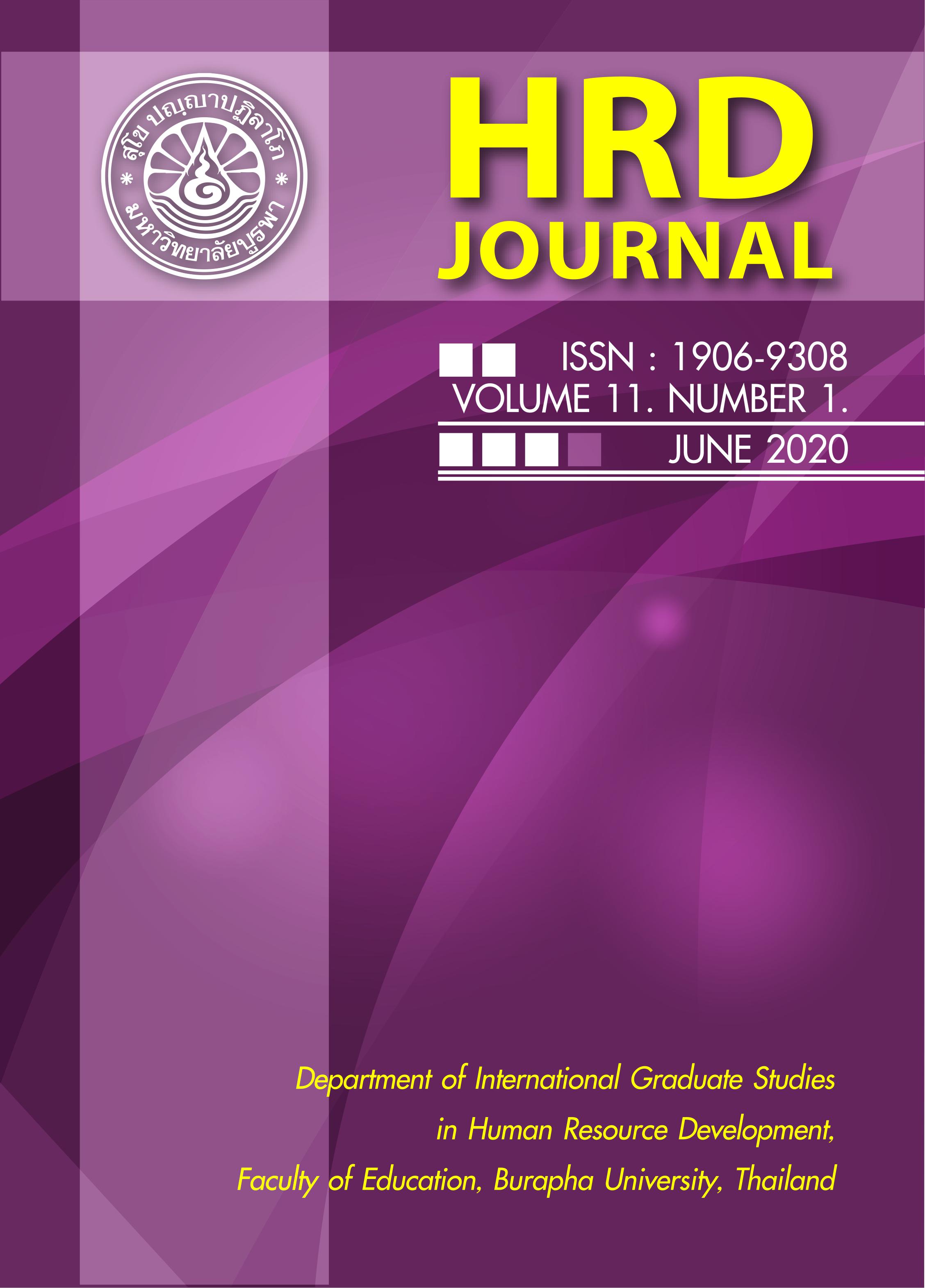Trust Creation in Cross Cultural Environment of Indian Companies in Manufacturing Sector in Thailand
Keywords:
Trust, Culture, Cross Culture, Indian Company, Experience, PerceptionAbstract
Trust among employees and the manage is one of the factors that leads to the success of a company, specifically the trust between the management and the employees who are from different cultures. The purposes of this study were to: find the factors which affect trust in cross cultural environment of Indian companies in a manufacturing sector in Thailand among employees of different nationalities (Thai, Indian, Myanmar and others), find the potential avenues which create mistrust, and the measures which can help build the existing level of trust for an effective utilization of existing human capital for economic, social and business advantage. A mixed method strategy was used to discover various dimensions relevant for the organization and potential redressed the issue of strengthening trust building in cross cultural environment of Indian companies operating in Thailand. The study results revealed the factors leading to the mistrust as follows: 1 communication process within Organizations involving Thai, Indian and other nationals, 2 employees experience while working in the organization, 3 language barrier at the workplace, 4 cultural factors and varying beliefs due to own social upbringing, and 5 discriminating factors those can lead to mistrust in the company. The study brought a realistic assessment of trust deficit based on inputs from employees across various levels and possible ways of nurturing the trust and eliminating the avenues for creating mistrust.
References
Arrow, K. J. (1972). What has economics to say about racial discrimination?. Journal of Economic Perspectives, 12(2), 91-100.
Asherman, A. (2000). Conceptualizing trust with cultural perspective in International business operations. Benchmarking an International Journal, 24(4), 1099-1118.
Baier, T. (1986). Trust and Antitrust-Jstor. Ethics, 96(2), 231-260.
Creswell, J. W. (2009). Research design: Qualitative, quantitative, and mixed methods approaches (3rd ed). Thousand Oaks, CA: Sage.
Creswell, J.W. (2014). Research design: Qualitative, quantitative, and mixed methods approaches (4th ed). Thousand Oaks, CA: Sage.
Doney, T., & Cannon, N. (1997). Toward A Trustful B to B Relationship. International Journal of Business and Management, 4(10), 64-77.
Doney, T. (1998). The oxford handbook of economic and institutional transparency. Oxford: Oxford University.
Ganesan, G. (1994). The Measurement of Trust in Marketing Studies. Journal of Marketing, 58, 1-19.
Ganesan, S. & Hess, R. L. (1997). Dimension and Levels of Trust. Implications for Commitment to a Relationship. Marketing Letters, 8(4), 439-448.
Glesne, C., & Peshkin, A. (1992). Becoming qualitative researchers, an introduction white plains. NY: Longman.
Greenberg, D. F. (2001). State Prison Populations and Their Growth. Criminology, 39(3), 615-564.
Guba, E. G. & Lincoln, Y. S. (1994). Competing paradigm in Qualitative research. In. N.K. Dezine & Y.S. Lincoln (Eds.). Handbook of Qualitative Research (pp. 105-117). Thousand Oaks, CA: Sage.
Guba, E. G. & Lincoln, Y. S. (2005). Paradigmatic: Controversies, contradictions, and emerging confluences. In N.K. Denzin & Y.S. Lincoln (Eds). The Sage handbook of qualitative research (3rd ed) (pp. 191-215). Thousand Oaks, CA: Sage.
Hakansson, T., & Sheheta, D. (2000). Organization Culture, Business to Business Relationship. Thousand Oaks, CA: Sage.
Hoftstede, G. (2001). Culture’s Consequences: Comparing values, behaviors, institutions, and organization across nations (2nd ed.). Thousand Oaks, CA: Sage.
Krejicie, R. V., & Morgan, D. W. (1970). Determining sample size for research activities. Educational and Psychological Measurement, 30(3), 607-610.
Krocber, A. L., & Kluckhohn, C.( 1952). Culture: A critical review of concepts and definitions. New York, NY: Random House.
Kingshott, B. F. (2006). Operational and communication effectiveness, and leadership structures. Criminal Justice Studies, 19(2), 121-137.
Krishman, R., Martin, X., & Noorderhaven, N. (2006). Contracts and trust in alliances: Discovering, creating and appropriate value. The Academy of Management Journal, 49(5), 894-917.
Lewicki, R. J., & Bunker, B. B. (1996). Developing and maintaining trust in work relationship. Thousand Oaks, CA: Sage.
Mooij, W. T. M. (1999). Cross cultural consumer behavior. A review of research findings, 23(3), 181-192.
Morgan, R. M., & Hunt, S. (1994). The commitment-Trust theory of relationship marketing. Journal of Marketing, 58(3), 20-38.
Nunn, N., & Wantchekon, L. (2011). The slave trade and the origins of mistrust in africa. American Economic Review, 101, 3221-3252.
Palmatier, R., Dant, P. R., Grewall, D. & Evans, R. K. (2006). Factors influencing the effectiveness of relationship marketing: A meta. Analysis. SSRN Electronic Journal, 70(4), 136-153.
Perlmutter, T. (1969). The tortuous evaluation of the multinational corporation Columbia. Journal of World Business, 4, 9-18.
Rokeach, M. (1973). The nature of human values. New York: The Free.
Stephan, P. R., & Timothy, A. J. (2007). On location. In P.R. Stephan, & A.J. Timothy (Eds.), Situating: Essays on the philosophy of John Perry. Cambridge, MA: MIT Press, 251-393.
Toyeb, A. (1988) Organization and national culture: A comparative analysis. Beverly Hills, CA: Sage.
Downloads
Published
How to Cite
Issue
Section
License
Copyright@HRD Journal, Burapha University






